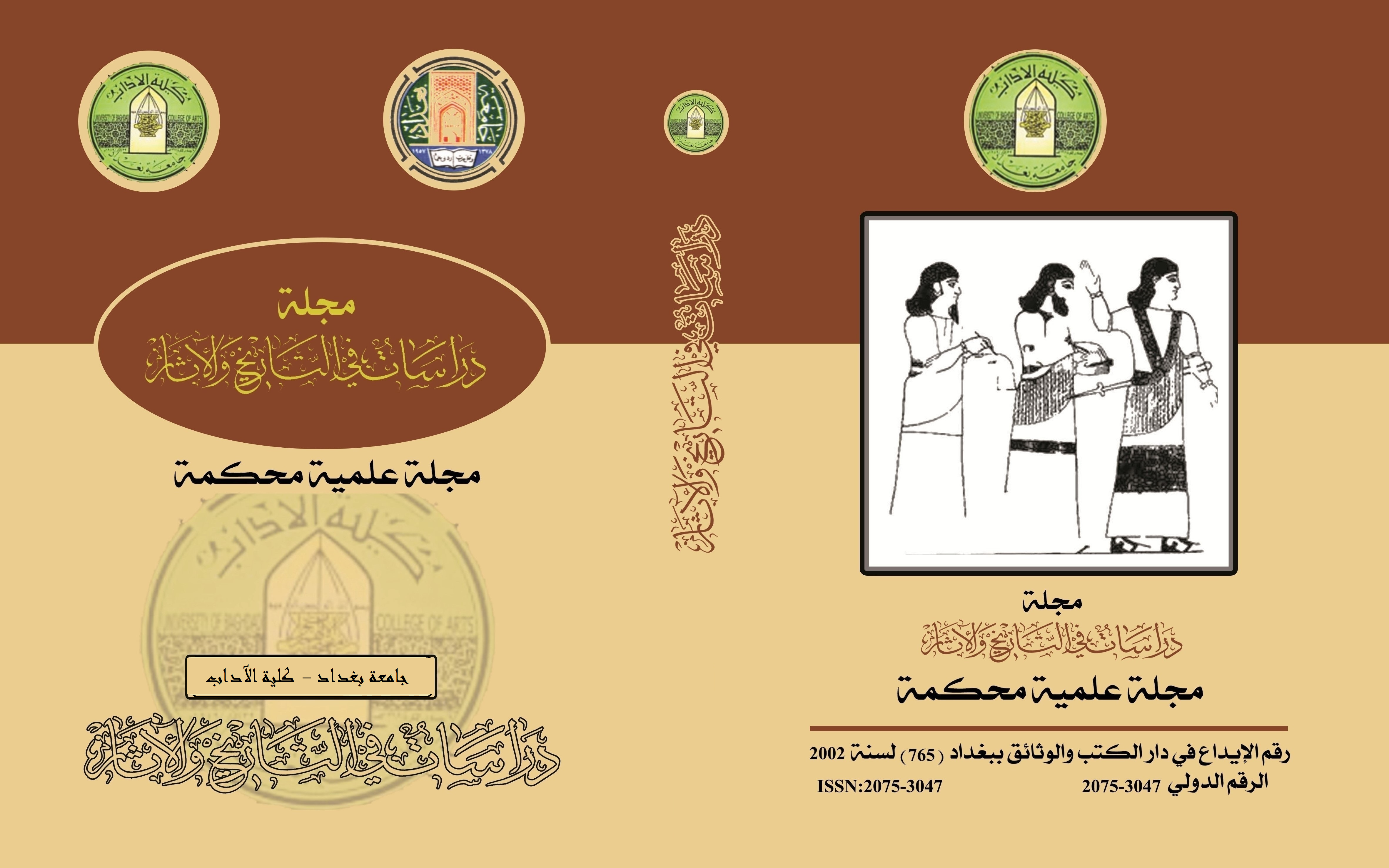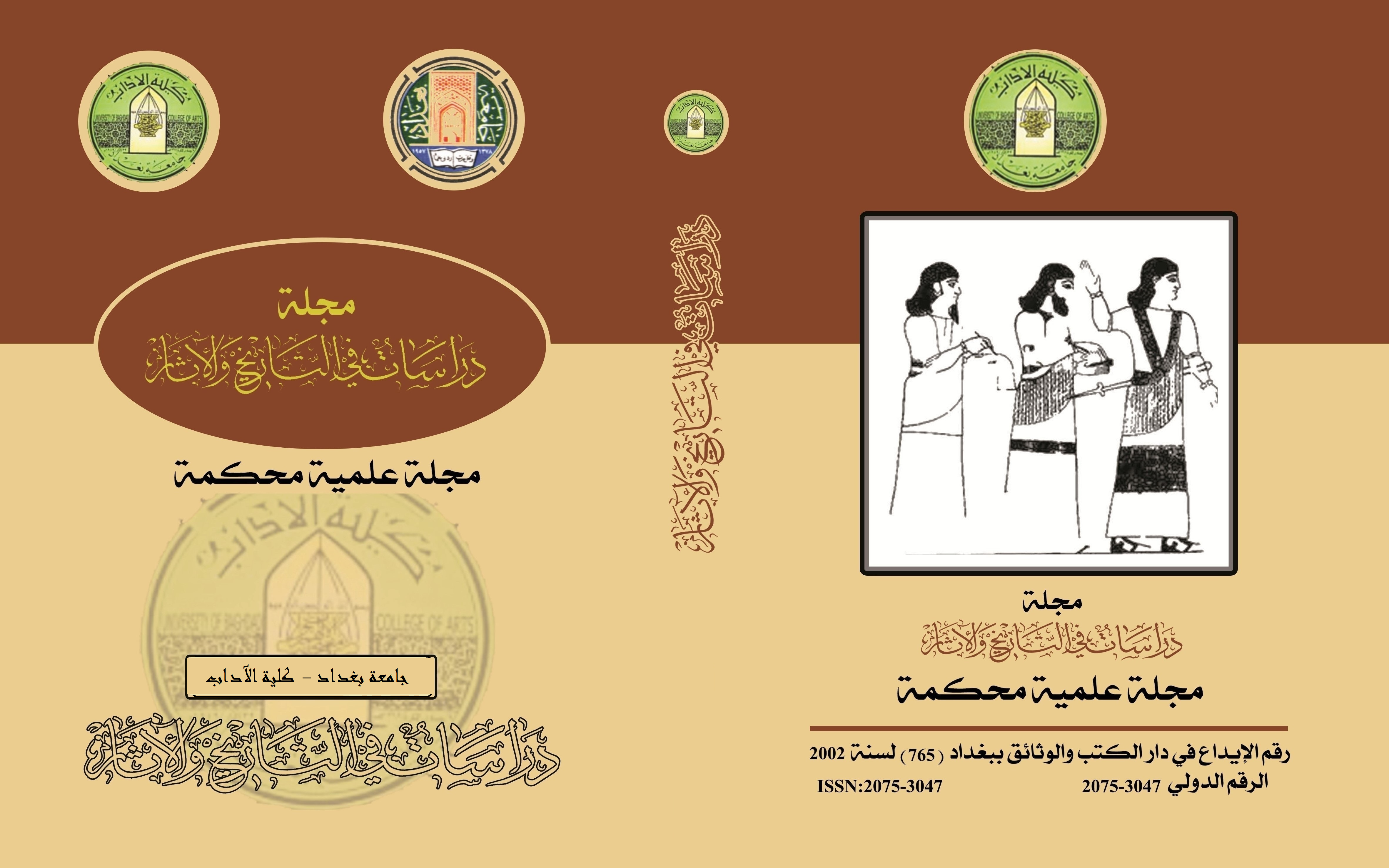عقوبة الزنى في قوانين الشرق الأدنى القديم
الكلمات المفتاحية:
زنا، عقوبةالملخص
اتفقت المجتمعات قاطبة على أن من أهم المهمات التي تلقى على الأخلاق هي تنظيم العلاقات الجنسية، وتكشف المصادر المسمارية عن تقليد قانوني شائع في علاج الزنا، تعود الاختلافات الواضحة إلى طريقة العرض التي استخدمتها قوانين القديمة، فكان الزنا جريمة على الزوج من قبل طرفين: الزوجة والعشيق، وكان الزنا في نفس الوقت خطيئة يمكن أن تؤدي إلى عقاب إلهي، وكانت الخيانة الزوجية قبل الزواج تخضع لقواعد مماثلة، يتم التعامل مع الزنا من خلال عدد من قوانين الشرق الأدنى القديم والرموز المسمارية والكتابية على حد سواء، مثل الأحكام الموجودة في قوانين بلاد الرافدين، والمملكة الحثية، وفي مصر، اما في التوراة فقد اعتبرت عقوبة الخيانة الزوجية هي الإعدام في القانون التوراتي (سفر التثنية)، ويعتبر زنى الزوجة خطيئة في حق الله، ويشير نص بابلي إلى الزنا على أنه (جريمة كبيرة مميتة).
لقد شرعت القوانين والمراسيم والإصلاحات الملكية منذ الالف الثالثة ق.م، وقد سبق القوانين المدونة فترة طويلة اعتمد فيها المجتمع على الأعراف والتقاليد في حسم قضايا الزنى وتثبيت حقوق الزوج واحيانا الزوجة، وقد سيطرت على مجتمعات الشرق الادنى القديم مفهوم شائع ومتعارف عليه بضرورة اتخاذ موقف متشدد من الزوجة الخائنة، وغض النظر عن الرجل في حالة خيانته لزوجته، وحتى شروط الزواج كانت الأرجحية في الحقوق للرجل فله حق الطلاق، وتعدد الزوجات، وغالبية عقود الزواج التي وصلتنا تتضمن طلب الزوج الانفصال عن زوجته، والملاحظ في الأسباب الشرعية للطلاق أنها تلتزم جانب الرجل على حساب المرأة، إلا في حالات نادرة كما ورد في النصوص القضائية السومرية بان من حق المرأة أن تطلب الطلاق من زوجها إذا قام الزوج فعلا بأعمال تسىء إليها وإلى حقها كزوجة، ولهذا هناك واجبات أساسية على الزوجة في محافظة المرأة وحرصها الكامل على حقوق الرجل الزوجية، ويعني ذلك الاحتشام، والمحافظة على العفة، وحسن السلوك، والتصرف، وعدم إقامة علاقات غير شرعية مع رجال آخرين، والامتثال التام لرغبات الرجل، فعندما يتم القبض على زوجة رجل في وضع غير محتشم (اضطجاع) مع رجل آخر يكفي هذا الأمر من الناحية القانونية فسخ رباط الزوجية، ولكن على حساب المرأة فقط والحكم عليها بالموت، والغريب في الأمر برمته أن عقوبة المرأة الخائنة في بلاد الرافدين هو ذاته في بلاد الشام، وبلاد الأناضول، وحتى في مصر، و كانت العقوبة التي تفرضها مجتمعات الشرق الادنى القديم هي عقوبة القتل وانهاء حياة الزوجة الخائنة وكذلك تشمل الزاني ايضا، ولكن إذا عفى الزوج عن زنى زوجته فالاعفاء يشمل الزاني ايضا.
المراجع
- القرآن الكريم
- التوراة
- أحمد أمين سليم: دراسات في تاريخ وحضارة الشرق الادنى القديم، مصر والعراق دراسات حضارية، بيروت، 2002
- ادولف ارمان و هرمان رانكه: مصر والحياة المصرية في العصور القديمة ، ترجمة: عبد المنعم أبو بكر و محمد كمال ، القاهرة، بدون سنة طبع
- جيمس هنري برستد: تاريخ مصر من أقدم العصور إلى الفتح الفارسي، ترجمة: حسن كمال، الطبعة الثانية، القاهرة ، 1996
- دومينيك ڤالبيل الناس والحياة في مصر القديمة، ترجمة: ماهر جويجاتي، الطبعة الثانية، القاهرة، 2001
- صبيح عبد اللطيف عبد الله: عقوبة جريمة الزنا في حضارة وادي الرافدين والشريعة الإسلامية السمحاء، رسالة ماجستير، معهد التاريخ العربي، بغداد، 1998
- صلاح رشيد الصالحي: المملكة الحثية، دراسة في التاريخ السياسي لبلاد الاناضول، بغداد، 2007
- صلاح رشيد الصالحي : الطب في بلاد الرافدين ، السحر والعقلانية في معالجة الامراض، الكتاب العلمي السنوي لمركز إحياء التراث العلمي العربي، العدد الأول، بغداد، 2009-2010
- صلاح رشيد الصالحي: القوانين الحثية، تاثير الشرائع العراقية القديمة على قوانين بلاد الاناضول، بغداد، 2010
- صلاح مصطفى الفوال: سوسيولوجيا الحضارات القديمة ، القاهرة، 1982
- عامر سليمان: القانون في العراق القديم، الطبعة الثانية، بغداد، 1987
- فوزي رشيد: الشرائع العراقية القديمة، الطبعة الثالثة، بغداد، 1987
- محمد بيومي مهران: الحضارة المصرية القديمة، الجزء الثاني، الطبعة الرابعة، القاهرة، 1989
- مختار السويفي: أم الحضارات ملامح عامة لأول - حضارة صنعها الإنسان، القاهرة، 1999
- مرجريت مري: مصر ومجدها الغابر، ترجمة: محرم كمال، القاهرة، 1957
- موفق مهذول محمد شاهين الطائي: قانون اورنمو، دراسة تاريخية قانونية مقارنة، بغداد، 2008
- وائل فكري: موجز موسوعة مصر القديمة، الجزء الأول، القاهرة، 2009
References
- Albrecht Goetze: “Old Babylonian Omen Texts,” Yale Oriental Series, Babylonian Texts Vol. 10. Yale University Press, New Haven. 1947
- Albrecht Goetze: “The Hittite Laws “In: Ancient Near Eastern Texts Relating to the Old Tastament (3 rd ed.) Edited by J. B. Pritchard. Princeton. N.J Princeton University Press, 1969
- Andre Finet: “Hammurapi et l’épouse vertueuse. A propos des parr 133 et 142-143 du Code.” In: Symbolae F. M. Th. De Liagre Böhl, Leiden, 1973
- Bendt Alster: “The Instructions of Šuruppak,” Wisdom of ancient Sumer, Bethesda, Maryland, CDL, 2005
- Charles E. Muntz:” Diodorus Siculus and the World of the Late Roman Republic.” 1st Edition, Oxford University Press, 2017
- Claudio Saporetti: "Studi di Storia e di Filologia Anatolica dedicati a G. Pugliese Carratelli" Firenze, 1988
- Claus Wilcke: “Liebesbeschwörungen aus Isin.” Zeitschrift für Assyriologie 75: Leipzig, 1985
- Claus Wilcke: “Sumerological Studies in Honor of Thorkild Jacobsen on His Seventieth Birthday June 7, 1974” Assyriological Studies, 2014
- Clemens Locher: “Die Ehre einer Frau in Near East.” Exegetische und rechtsvergleichende Studien zu Deuteronomium 22, (= Orbis Biblicus et Orientalis 70), 1986
- Daniel E. Fleming: “Democracy's Ancient Ancestors: Mari and Early Collective Governance”, Cambridge University Press, 2004
- Dominique Charpin: “Le clergé d'Ur au siècle d'Hammurabi (XIXe-XVIIIe siècles av. J.-C.” French edition, 1986
- Erica Reiner: "Revue d'assyriologie et d'archéologie.” Orientale 69: Paris, 1975
- Gerd Steiner: "Die Femme fatale im alten Orient.” In: Durand, La Femme, 1987
- Gernot Wilhelm: “Medizinische Omina aus Ḫattuša 1n akkadischer Sprache.” Wiesbaden, 1994
- Godfrey Rolles Driver and John Charles Miles: “The Babylonian Laws I” Publisher: Oxford, 1956
- Guillaume Cardascia: “Hommage à Guillaume Cardascia” (= Méditerranées no. 3), Publisher: Nanterre Association Méditerranée, 1995
- Gwendolyn Leick: “Sex and eroticism in Mesopotamian literature” London,1994
- Hans Neumann: “Schuld und Sühne . Zu den religiös-weltanschaulichen Grundlagen und Implikationen altmesopotamischer Gesetzgebung und Rechtsprechung”. In: Hengstl, J.; Sick, U. (Hrsgg.): Recht gestern und heute. Festschrift zum 85. Geburtstag von Richard Haase. Wiesbaden. 2006
- Hans Neumann: “Gottliche Gerechtigkeit und menschliche Verantwortung im alten Mesopotamien im Spannungsfeld von Norm(durch)setzung und narrative Formulierung”. In: Barta, H.; Rollinger, Robert; Lang, M. (Hrsgg.): Recht und Religion. Menschliche und göttliche Gerechtigkeitsvorstellungen in den antiken Welten. Wiesbaden 2008
- Harry Hoffner: “The Laws of the Hittites “New York. 1997
- Herbert P.H. Petschow: "Die §§ 125 bis 129 CḪ und ihre Stellung im Gesetz.” Nouvells Assyriologiques Breves Utilitaires (NABU), Paris. 1990
- Jacob J. Finkelstein: "Sex Offenses in Sumerian Law,” Journal of the American Oriental Society, 86: New Haven, 1966
- Jacobus van Dijk: Zeitschrift für Assyriologie 55: Berlin. 1963
- Jakob Eduard Polak: “Persien. Das Land und seine Bewohner. Ethnographische Schilderungen.” Vol. I: Front Cover, 1865
- Jean-Jacques Glassner: “Écrire à Sumer.” – L’invention du cunéiforme. Paris: Editions du Seuil, Compte rendu de la vingtième Rencontre Assyriologique Internationale 47, part I: 2002
- Jean-Marie Durand: “[Title unavailable.] Annuaire de l’École Pratique des Hautes Études”.IVe Section: Sciences historiques et philologiques 110: 1977-1978
- Jean-Marie Durand: “Les accusations d’adultère”, In: G. del Olmo Lete, Mythologie et religion des Sémites occidentaux I, 2008
- Jesper Eidem: “The royal archives from Tell Leilan.” Old Babylonian Letters and Treaties from the Lower Town Palace East (PIHANS 117), 2011
- Klaas Spronk: “Vals beschuldigd? Achtergronden bij de scheiding en verdwijning van een Ugaritische koningin uit de dertiende eeuw voor onze jaartelling”, In: C. Houtman, De leugen regeert. 2004
- Kurt Sethe:” Urk. 1 “ Urkunden des Alten Peiches “ Leipzeg, 1903
- Leo Oppenheim: “Letters from Mesopotamia” 1967
- Lionel Marti: Nouvells Assyriologiques Breves Utilitaires (NABU), Paris. 2001
- Marten Stol: “Birth in Babylonia and in the Bible.” Cuneiform Monographs 14. Groningen, Styx. 2000
- Marten Stol: “Women in the Ancient Near East.” Translated by Helen and Mervyn Richardson, Berlin. 2016
- Martha T. Roth: “Babylonian marriage agreements 7th-3rd centuries B.C”, Alter Orient und Altes Testament 222. Neukirdhen-Vluyn: Neukirchner Verlag, 1989
- Martha T. Roth: “Law Collections from Mesopotamia and Asia Minor.” Second Edition. Atlanta Scholars Press, 1997
- Matitiahu Tsevat: “The Husband Veils a Wife “Journal of Cuneiform Studies 27. New Haven 1975
- Nils P. Heeßel: "Babylonisch-assyrische Diagnostik" Alter Orient und Altes Testament 43, Münster: Ugarit Verlag, 2000
- Nils P. HeeBel: “Rechts oder links –wörtlich oder dem Sinn nach?” Writings of Early Scholars in the Ancient Near East, Egypt, Rome, and Greece.” Edited by Annette Imhausen, Tanja Pommerening, Walter de Gruyter , Berlin, 2010a
- Nils P. Heeßel: “Writings of early scholars in the Ancient Near East, Egypt, Rome, and Greece.” Translating Ancient Scientific Texts, Edited by: Annette Imhausen and Tanja Pommerening, 2010b
- Pascal Vernus: “ Affairs and Scandals in Ancient Egypt", Cornell University Press, 2003
- Raymond Westbrook: “Adultery in Ancient Near Eastern Law.” Revue biblique 97: Paris, 1990
- Raymond Westbrook: “Evidentiary Procedure in the Middle Assyrian Laws.” Journal of Cuneiform Studies 55: New Haven, 2003
- Raymond Westbrook: " Adultery in Ancient Near Eastern Law" Law from the Tigris to the Tiber: The Writings of Raymond Westbrook, Volume 1: The Shared Tradition, Indiana. 2009
- René Labat: “Traité akkadien de diagnostics et pronostics médicaux”. Volume 1, Paris: Académie internationale d'histoire des sciences; Leiden: E.J. Brill, 1951
- René Labat: and Dietz O. Edzard: “Textes littéraires de Suse,” Mémoires de la Délégation de Perse 57, Paris, 1974
- Rykle Borger: “Babylonisch-assyrische Lesestücke”, Pontifical Biblical Institute, third edition, Rome. 2006
- Samuel Greengus: "A textbook case of adultery in Ancient Mesopotamia.” Hebrew Union College Annual 40-41: Ohio, 1969-1970
- Sophie Lafont: “Sanctions sociales et peines infamantes dans le droit de la famille au Proche-Orient ancient.” In: Hommage à Romuald Szramkiewicz, 1998
- Sophie Lafont: “Femmes, droit et justice dans l’Antiquité orientale: Contributions à l’étude du droit au Proche-Orient ancient, Fribourg/Göttingen. 1999
- Sylvie Lackenbacher: "Textes akkadiens d’Ugarit.” Littératures anciennes du Proche-Orient 20, Paris. 2002
- Thorkild Jacobsen, “Toward the Image of Tammuz and Other Essays on Mesopotamian History and Culture” Edited by William L. Moran, Harvard University Press, 1970
- Trevor Bryce: “The Kingdom of the Hittites.” New Edition, Oxford University Press. 2005
- Ulla Koch-Westenholz: “Babylonian liver omens.” The Chapter Manzāzu, Padānu and PānTākalti of the Babylonian Extispicy Series Mainly from Aššurbanipal’s Library.Copenhagen: Museum Tusculanum Press, 2000
- Wilfred G. Lambert: “Babylonian Wisdom Literature.” Oxford: Clarendon Press, 1960
- Wilhelm Spiegelberg:” Studien und Materialien zum Rechtswesen des Pharaonenreiches - Hannove, 1892
- William W. Hallo: “The Context of Scripture Vol. 3: Publisher: Brill. 2002
التنزيلات
منشور
إصدار
القسم
الرخصة

هذا العمل مرخص بموجب Creative Commons Attribution 4.0 International License.
:حقوق الطبع والنشر والترخيص
بالنسبة لجميع البحوث المنشورة في مجلة دراسات في التاريخ والآثار، يحتفظ الباحثون بحقوق النشر. يتم ترخيص البحوث بموجب ترخيص Creative Commons CC BY 4.0 المفتوح ، مما يعني أنه يجوز لأي شخص تنزيل البحث وقراءته مجانًا. بالإضافة إلى ذلك ، يجوز إعادة استخدام البحث واقتباسه شريطة أن يتم الاستشهاد المصدر المنشور الأصلي. تتيح هذه الشروط الاستخدام الأقصى لعمل الباحث وعرضه.
:إعادة إنتاج البحوث المنشورة من الناشرين الآخرين
من الضروري للغاية أن يحصل الباحثون على إذن لإعادة إنتاج أي بحث منشورة (أشكال أو مخططات أو جداول أو أي مقتطفات من نص) لا يدخل في نطاق الملكية العامة أو لا يملكون حقوق نشرها. يجب أن يطلب الباحثون إذنًا من مؤلف حقوق النشر (عادة ما يكون الناشر).
يطلب الإذن في الحالات التالية:
بحوثك الخاصة المنشورة من قِبل ناشرين آخرين ولم تحتفظ بحقوق النشر الخاصة بها.
مقتطفات كبيرة من بحوث أي شخص أو سلسلة من البحوث المنشورة.
استخدم الجداول والرسوم البيانية والمخططات والمخططات والأعمال الفنية إذا لم يتم التعديل عليها.
الصور الفوتوغرافية التي لا تملك حقوق لنشرها.
لا يطلب الإذن في الحالات التالية:
إعادة بناء الجدول الخاص بك مع البيانات المنشورة بالفعل في مكان آخر. يرجى ملاحظة أنه في هذه الحالة يجب عليك ذكر مصدر البيانات في شكل "بيانات من ..." أو "مقتبس من ...".
تعتبر عروض الأسعار القصيرة معقولة الاستخدام العادل ، وبالتالي لا تتطلب إذنًا.
الرسوم البيانية ، الرسوم البيانية ، المخططات ، الأعمال الفنية التي أعاد الباحث رسمها بالكامل والتي تم تغييرها بشكل ملحوظ إلى درجة لا تتطلب الاعتراف.
الحصول على إذن
لتجنب التأخير غير الضروري في عملية النشر ، يجب أن تبدأ في الحصول على أذونات في أقرب وقت ممكن. لا يمكن لمجلة الآداب نشر بحث مقتبس من منشورات أخرى دون إذن.
قد يمنحك مالك حقوق الطبع والنشر تعليمات بشأن شكل الإقرار الواجب اتباعه لتوثيق عمله ؛ بخلاف ذلك ، اتبع النمط: "مستنسخ بإذن من [المؤلف] ، [كتاب / المجلة] ؛ نشره [الناشر] ، [السنة]." في نهاية شرح الجدول ، الشكل أو المخطط.



















